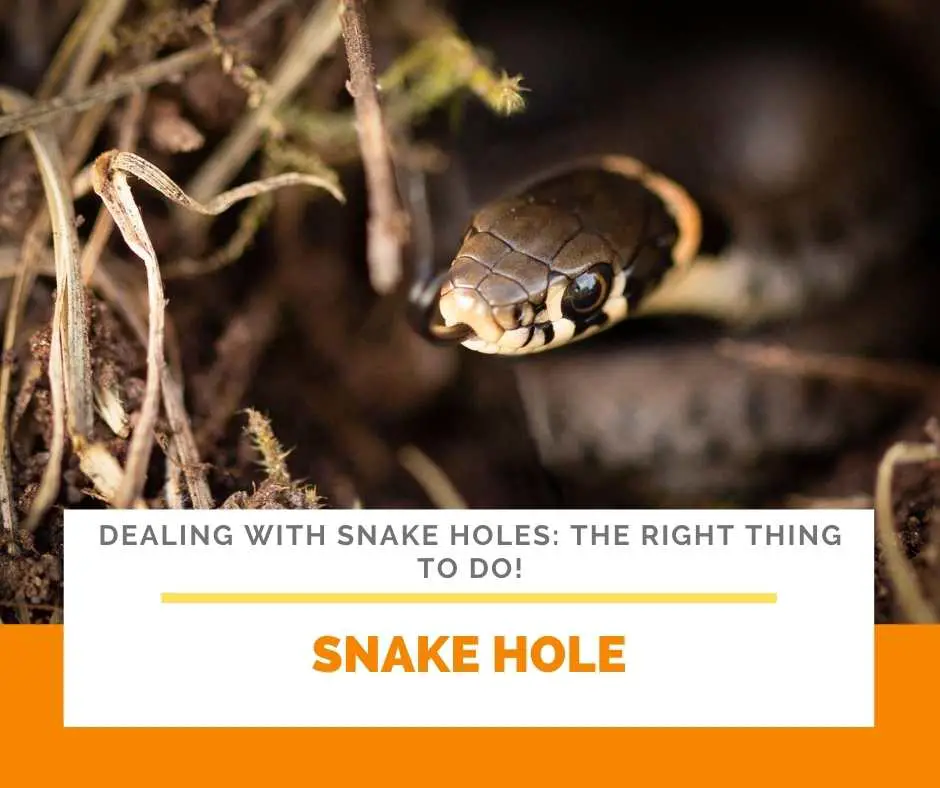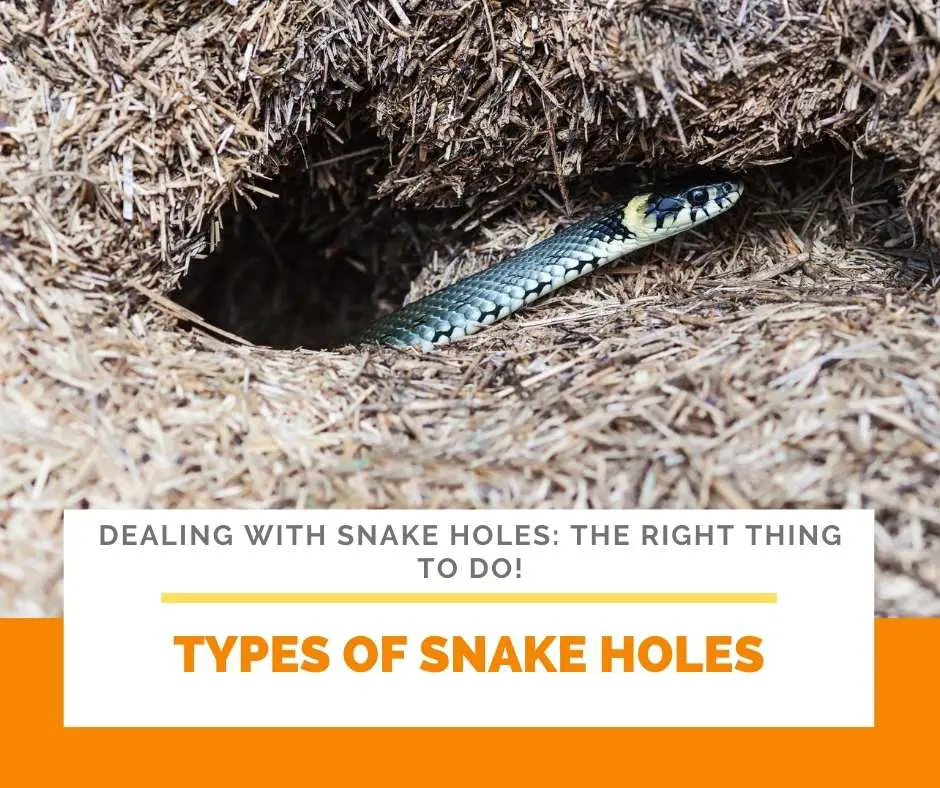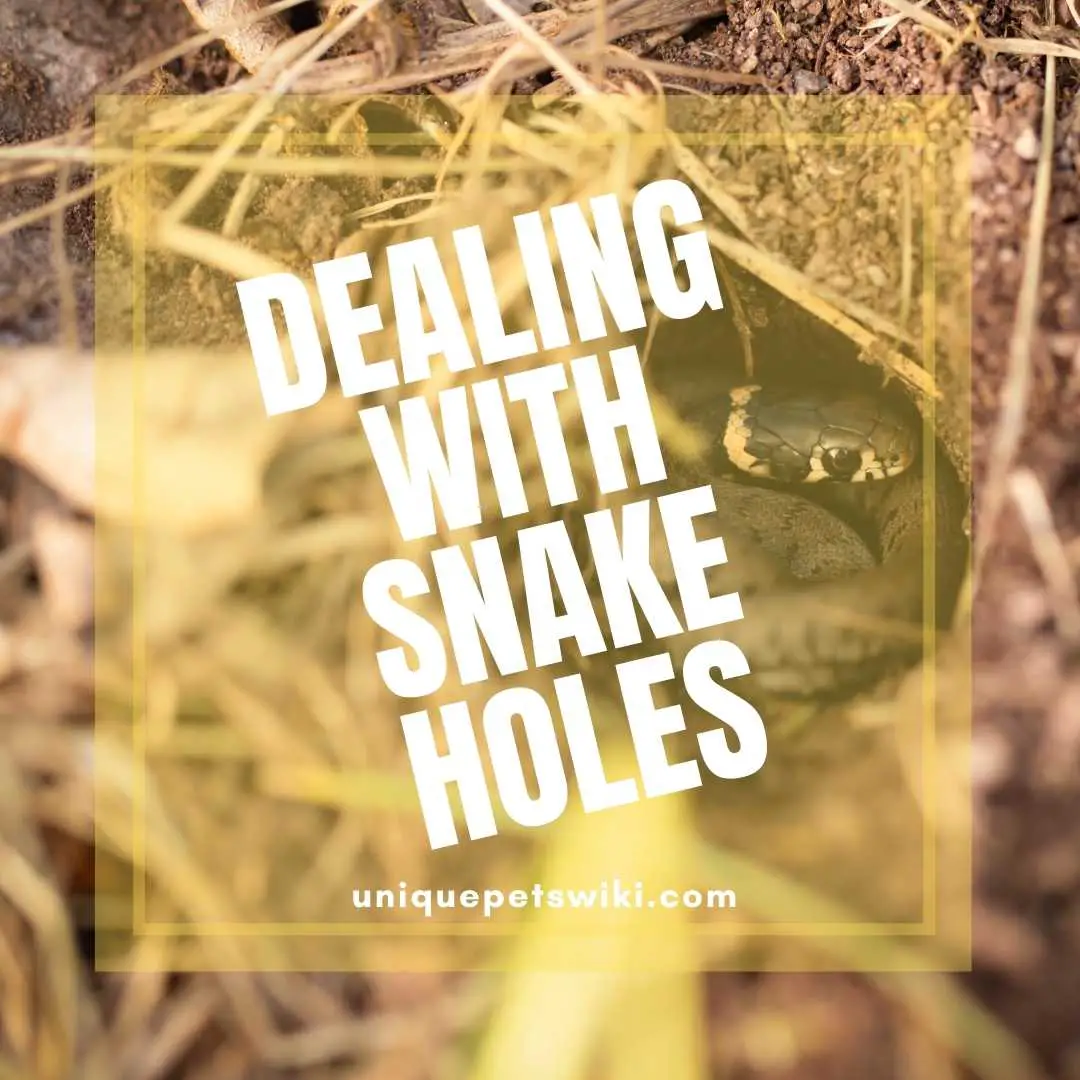Holes is a perfect nesting spot for snakes and several other wildlife; this means that these animals can inhabit holes on your lawn or garden. How to deal with snake holes? What should you do with it?
Snakes have fascinating behavioral patterns that have interested lots of people.
Many researchers find their behavior interesting, and you will find out that their behavior is unique and different from a situation to another.
Many people are wondering if snakes live in holes, this article will do justice to everything you need to know about the snake hole.
Contents
Snake Holes

Holes is a great nesting spot for snakes and several other animals. Snakes are popularly known to live in holes abandoned by other animals like rodents, gopher tortoises, and so on.
What are Snake Holes?
Well, it indicates that snakes do not build holes but can be found in holes on your lawn or the house. Snakes not only live in snake holes; they can also hide in hollows of trees or under leaf litters or rocks.
How do Snakes Make Holes?
Although snakes cannot dig, they can find their way through loose soil. Snakes cannot even dig holes in mulch, but some species can push their way through a mulch.
No snake species can dig through hard ground and create a home for itself.
However, in areas with very loose lands like sandy areas in Asia or Africa, and Australian deserts, they can dig sand for themselves. But it’s like burying themselves instead of digging a hole.
Characteristics of Snake Holes
Snakes live in a hole because it makes them feel safe, and they are comfortable as their backs touch the ceiling of their holes.
Although some snakes are choosy when it comes to where to live, other snake species will use whatever shelter they find.
You can easily know if a hole in your lawn is occupied if the hole’s entrance is free of spider webs, debris, or fallen leaves.
Types of Snake Holes

You are going to find a wide range of snake species in a different environment, for instance, some snakes like cottonmouth species like staying in a water-laden environment like ponds, streams, ditches, and lakes.
You will find some snakes like garter in tall grassy, forested areas, or marshland. They can live in tree hollows, leaf litter, under logs, burrows, underground holes that are abandoned by other animals.
Snake Holes in the Lawn
There is a wide range of things that can cause holes in your yard or lawn.
The holes can be created by children at play, flooding and irrigation problems, animals, and rotten roots.
The size of the hole in your lawn also matters because small holes are inhabited by invertebrates, insects, or burrowing rodents. Snakes can also inhabit the holes that were created in your lawn.
Snake Holes in Yard & Garden
If you see a hole in your garden and feel that it might be a snake hole, it is best to leave it alone.
This is because most snakes in a yard are beneficial and provide a natural balance to the ecosystem. Snakes will help you to feed on frogs, insects, and pests such as rats and mice. And also, most snakes are shy and will slither away if you disturb them.
Many people even use a rubber snake to scare bird. And it works! Loll
Ways of Identifying Snake Holes in Yard
Look for Shed Snake Skins
Most snakes will shed their skin once a month during snake life cycle.
Shedding helps snakes to repair damaged skin cells and get rid of parasites.
Snakes usually rub against rocks[source] and stick to break off their skin, and it may be hard to find its skins because rodents or insects eat it within some days.
However, you can spot a snake while it is shedding, and it is best to leave it alone because they get irritated easily during this process.
Look for Feces
Snakes just like other animals excrete waste, and you can use it to detect a snake hole. You can identify a snake feces if you know its diet. The diet of snakes is usually an insect, small mammals, and smaller reptiles, and you will find a trace of prey in its feces.
Dealing with Snake Hole
Just Leave it Alone
If you are to find a hole in your garden that you think is a snake hole, it is best to leave it alone. In the garden, it can feed on insects, mice, frogs, and rats.
If the snake is disturbed by humans, it can easily slither away and leave you in peace.
Cover the Hole
Snakes love to stay in holes because it is cool, dark, and private, which is why it is attracted to holes anyplace you see it.
If you discover a snake infestation in your home, you can block off these holes, which will discourage them from coming back.
You can cover the holes with boards, wire fencing, burlap, or boards.
Things to keep in mind:
- Avoid piling the hole too much so that you do not create a new place that they can stay.
- Be cautious while covering a snake hole because you may encounter a snake.
Call a Professional Exterminator.
If you are afraid of a snake’s presence in your yard and you are scared to get it out yourself, you can just call an exterminator.
An exterminator will come and assess your home and offer the best solutions that you can take.
They will give you options on whether you can trap the snake or use an expensive snake fence option. If you are also unsure if a snake is venomous, it is best to call animal control.
Things not to Do
Try to be careful when you are interfering with snakes. Although most snakes are usually harmless, you should avoid picking a snake barehanded to avoid snake bite.
Try to pick a snake with gloves and sticks that are recommended for carrying a snake.
You should also check the state and local laws before exterminating a snake to know the legally approved way of eradicating it.
Do Snakes Make Holes in the Ground?
Snakes do not make holes in the ground as it inhabits the holes made by other animals.
There is a wide range of rodents such as mice, rats, prairie dogs, chipmunks that can make holes in the ground.
If these rodents are not careful, they can be eaten by snakes like gopher snake, black racer, milk snake, etc. while they steal their home as well.
Snakes like crayfish snakes, water snakes, and other semi-aquatic snakes can inhabit the holes made by crayfish and frogs. The eastern indigo snake may inhabit the holes that are made by gopher tortoises.
Should you Get a Snake out of a Hole?
It is advisable not to get a snake out of a hole. This is because a snake can attack you when threatened.
However, the best way to get a snake out of snake holes is stated below.
Then you should look for the way get rid of snake instead.
How to Get a Snake out of a Hole?
You will need to wait if you are planning to lure a snake out of hiding.
Snakes are usually cautious and can wait for a long time inside a hole, and you cannot easily tempt a snake with food.
This means you will need to set a snake trap by the snake hole and just wait for it to enter the trap.
Safety Precautions
Before dealing with snakes, it is best if you know the current snake bite first aid treatment and have a snake kit on hand, some of the safety measures you can take when dealing with snake holes in your lawn.
Precautions to Reduce the Risk of Being Bitten
- Avoid picking up or moving a snake.
- Avoid placing your hands in a snake hole.
- Use a long stick to poke the ground while you walk through weeds or tall grass.
- Once you spot a snake, try to move back away from its striking distance.
- Wear protective gear like leather gloves, gaiters, high boots, thick pants when you are working or walking in wooded or grassy areas.
- Always have a flashlight with you when walking at night.
In Cases of Snakebite
If a venomous snake bites anybody, call 911 immediately so that antivenom can be administered.
You should try to note the color and shape of the snake so that it can be easy to treat the bite. Always keep the person calm so that the venom will not spread quickly. Some of the first aid you can do before experts arrive are:
- Telling the person to stay still
- Let the person lay or sit while the bite level is below the heart.
- Cover the bite with a clean and dry dressing.
- Having the person lay or sit with the bite level below the heart.
Conclusion
Snake cannot dig a hole itself unless an animal or human digs it.
You can keep snake holes away from your lawn or garden by covering all the holes in your lawn.
If you find a snake hole in your lawn, avoid sticking your hand inside but set a trap to catch it.

This past week I’ve suddenly seen about 75 holes in my yard around the perimeter where ground meets the lake. Would these holes be from snakes coming out for the season? I also saw 4 snakes in 4 days, each a different color and pattern. What can I do to be in my yard with my little grandchildren and not have to worry about snake bites?